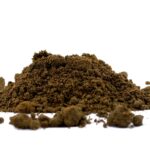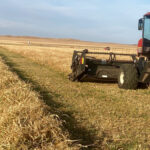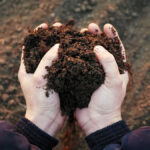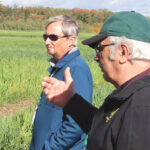1.
Tag Archives Soil

Van Eerd, Denotter honoured with OSCIA Soil Champion Award
Roger and David Buurma recognized for on-farm ingenuity with Don Hill Legacy Award
Two soil health contributors were honoured with Ontario Soil and Crop Improvement Association (OSCIA) 2021 Soil Champion Awards. “This year we are lucky enough to be able to award two […] Read more

Degelman to make heavy harrows for Deere
Regina company reaches OEM agreement for new line
Major U.S. farm equipment manufacturer John Deere Co. has launched a new line of heavy harrows — and is going to Saskatchewan to get them. Regina equipment maker Degelman Industries […] Read more

New face at soil network helm
Tori Waugh has been appointed executive director of the Ontario Soil Network. Waugh, principal consultant at Conservation Ag Consulting, has helped grow the Ontario Soil Network to its current role […] Read more

Let nature direct ecosystem health
Researcher says agriculture needs to learn from how water, soil function in nature
I have learned more from observing Nature than by trying to change it,” said Dwayne Beck. Beck, the research manager at Dakota Lakes Research Farm (DLRF) in Pierre, South Dakota, […] Read more

Soil’s processes need to be understood to build organic matter
Increasing soil health is a highly complex process tied to chemical and biological cycles
To understand the paradigm shift in the production of soil organic matter you’re going to have to dig a little deeper. “Soil organic matter (SOM) is intimately linked to soil […] Read more

Instant samples offer quick decisions on the farm
Whether it is leaves or soils, the lab-in-a-box solution puts portable testing in hands of farmers and agronomists
Glacier FarmMedia – The METOS MobiLab provides soil and sap nutrient measurement in less than two hours. “We can measure nitrate and ammonia from the soil analysis part of the […] Read more

Finding the right fungus
First steps taken to identify and promote fungi beneficial in cropping systems
Do you have fungus? Your fields certainly do, though the varieties vary based on several factors. While tillage levels, rotational diversity and cover crops affect fungi type, they don’t appear […] Read more

Twenty-five farms host on-farm soil health research
The ONFARM initiative brings together diverse industry cooperators
A four-year federal-provincial agreement to fund a series of field-scale soil health research projects is underway across southern Ontario. In all, 25 co-operator farmers have taken on side-by-side plots at […] Read more

Drainage demo farm sets baselines
The ambitious project features standard, contour, controlled and terrace drainage
The Huronview Demo Farm looks much different than it did a year ago when tile machines from several companies were busy installing the numerous drainage systems showcased at the farm. […] Read more

Adventures in strip-tilling
How two farmers adopted and augmented their strip-till approach
There’s more than one way to strip-till a field. During this year’s Canada’s Digital Farm Show, Woodstock-area grain growers Ken Martin and Wes Hart shared their lessons learned, and triumphs […] Read more
